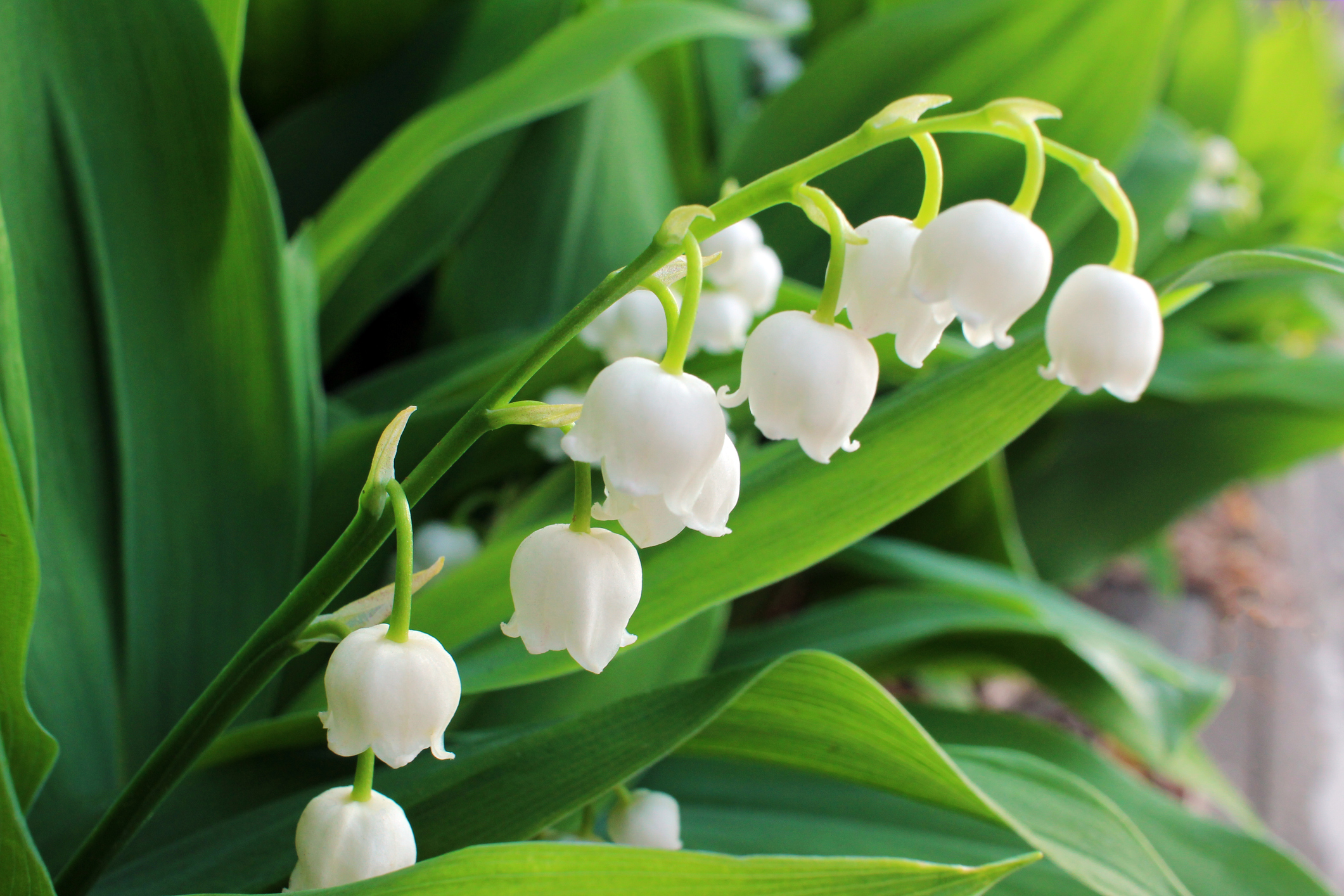May: Lily of the Valley | Hawthorne
The flowers traditionally associated with the month of May are Lily of the Valley and Hawthorn. Lily of the Valley symbolizes sweetness, humility, and happiness, while Hawthorn represents hope and supreme happiness. These flowers are often used in May Day celebrations and other springtime festivities.
More Flower Meanings
Amaryllis
In Greek mythology, the Amaryllis is named after a shepherdess who created the flower from her blood to express her love for Alteo. The flower's bulb is used medicinally for respiratory ailments.
Aster
The name "Aster" originates from the Greek word for "star," and in ancient times, it was believed that the perfume of burning Aster leaves could drive away evil spirits.
Azalea
Azaleas have a long history of medicinal use in traditional Chinese medicine, where they were employed to alleviate various health conditions, including fever and coughs.
Bells of Ireland
Despite its name, Bells of Ireland is not native to Ireland but rather to Western Asia. It is often associated with good luck and used in herbal medicine for various therapeutic benefits.
Bittersweet
In folklore, Bittersweet is linked to themes of truth and deception. The berries are toxic if ingested and can cause gastrointestinal issues.
Camellia
Camellias have deep cultural significance in Japan and represent everything from love and devotion to the samurai's spirit. Some varieties of Camellia oil are used in cosmetics and skincare.
Carnation
Ancient Greeks and Romans used Carnations in ceremonial crowns and garlands. The flowers are edible and were once used in cooking and as a medicinal remedy.
Red Carnations
Red Carnations were associated with the Christian legend of the Virgin Mary's tears, symbolizing her deep sorrow during the crucifixion of Jesus.
Pink Carnations
Legend has it that pink Carnations were created from the tears of a mother weeping for her child, making them a symbol of maternal love.
Purple Carnations
Purple Carnations are thought to represent capriciousness and unpredictability in love and affection.
Green Carnations
In the 19th century, green Carnations gained popularity as a symbol of homosexuality, particularly among Oscar Wilde and his followers.
White Carnations
White Carnations are commonly associated with motherly love and purity. They were also used as a symbol of remembrance for soldiers who died during World War I.
Chrysanthemums
Chrysanthemums were cultivated in China over 2,500 years ago and were later introduced to Japan, where they became the emblem of the Japanese imperial family.
Red ChrysanthemumsIn Japan, red Chrysanthemums are associated with love and deep passion.
White Chrysanthemums
The white Chrysanthemum holds cultural significance in Asian countries, symbolizing purity and truth. They are also used in traditional medicine for their therapeutic properties.
Daffodils/Narcissus
The name "Narcissus" comes from Greek mythology, where Narcissus fell in love with his own reflection, giving rise to the term "narcissism." Some Daffodils contain toxic alkaloids.
Dahlia
Named after the Swedish botanist Anders Dahl, the Dahlia's tubers were consumed by indigenous peoples in Mexico and Central America as a food source.
Delphinium
Delphiniums are also known as "Larkspurs," derived from the shape of their flowers, which resemble a lark's spur or claw.
Gardenia
Gardenias were named after Alexander Garden, an 18th-century Scottish botanist. They have been used in traditional Chinese medicine for their anti-inflammatory properties.
Gladiolus
The name "Gladiolus" originates from the Latin word "gladius," meaning "sword," because of its sword-shaped leaves. The corms were used in ancient times for medicinal purposes.
Heather
Heather has long been associated with Scottish folklore, symbolizing good luck and protection. It was also used historically to make brooms and thatched roofs.
Like many other blooms that occur in a variety of hues, each color variation of delphinium conveys a different meaning. Pink means fickleness, white conveys a happy nature, and purple is often representing a first love. Overall, delphinium indicates strong bonds of love.
They're pretty and fragrant, but don't let pets, cattle, or people ingest any part of the Delphinium plant. They're quite toxic to all of us - it can cause digestive discomfort if ingested, skin irritation, and possibly death.
Purple Hyacinth
In Greek mythology, the Hyacinth is associated with the story of Apollo and Hyacinthus, and it represents sorrow and deep regret.
Pink Hyacinth
In the Victorian language of flowers, pink Hyacinths symbolize playfulness and joy.
White Hyacinth
White Hyacinths are often associated with loveliness and sincerity.
Hydrangea
In Japan, Hydrangeas are associated with heartfelt emotion and gratitude. Some species of Hydrangea are used in traditional medicine for their diuretic properties.
Iris
The fleur-de-lis, a stylized Iris, holds symbolic significance in French heraldry, representing royalty and purity. Some Iris species have medicinal uses.
Ivy
Ivy has been a symbol of fidelity and eternity since ancient times. The berries are toxic if ingested.
Lily
Lilies have a rich history in various cultures, often associated with goddesses and purity. Some species of Lily are toxic to cats.
Calla Lily
The Calla Lily is associated with resurrection and rebirth, making it a popular choice for funerals and weddings.
Tiger Lily
The name "Tiger Lily" refers to the spots on the petals, resembling the fur of a tiger.
White Lily
White Lilies symbolize virtue, and they have been used in various religious ceremonies throughout history.
Yellow Lily
Yellow Lilies are associated with happiness and gratitude.
Lily of the Valley
In Christian tradition, Lily of the Valley symbolizes the tears of the Virgin Mary, and it is believed to bring luck in love.
Marigold
Marigolds have been used for medicinal purposes in various cultures, and they are also known for their pest-repellent properties in gardens.
Magnolia
Magnolias are ancient flowers, dating back millions of years, and have strong ties to traditional Chinese medicine.
Orchid
Orchids were highly valued by ancient Greeks and Romans for their association with virility and fertility. Some orchid species have medicinal uses.
Peony
The Peony holds a significant place in Chinese culture, symbolizing prosperity, honor, and a happy life.
Petunia
Petunias were first discovered in South America and have since become popular ornamental plants due to their vibrant colors.
Poppy
Poppies have been associated with sleep, peace, and death in various mythologies. Opium poppies are the source of opium, used for medicinal and recreational purposes.
Roses
Roses have a long history of cultural and symbolic significance. Ancient Greeks associated them with Aphrodite, the goddess of love and beauty.
Snapdragon
The name "Snapdragon" comes from the flower's resemblance to a dragon's mouth, which opens and closes when squeezed.
Sunflower
Sunflowers were cultivated by Native Americans for their practical uses, such as oil production and medicinal properties.
Tulip
Tulips were highly prized during the Dutch "Tulipmania" in the 17th century, resulting in a speculative bubble known as the first recorded economic bubble.
Red Tulip
Red Tulips are often associated with deep, passionate love, and they were used as a symbol of true love during the Victorian era.
Yellow Tulip
Yellow Tulips have historically symbolized cheerful thoughts and sunshine.
Violet
Violets have been used in herbal medicine for various respiratory and skin conditions. In ancient Greece, violets were associated with love and fertility.


